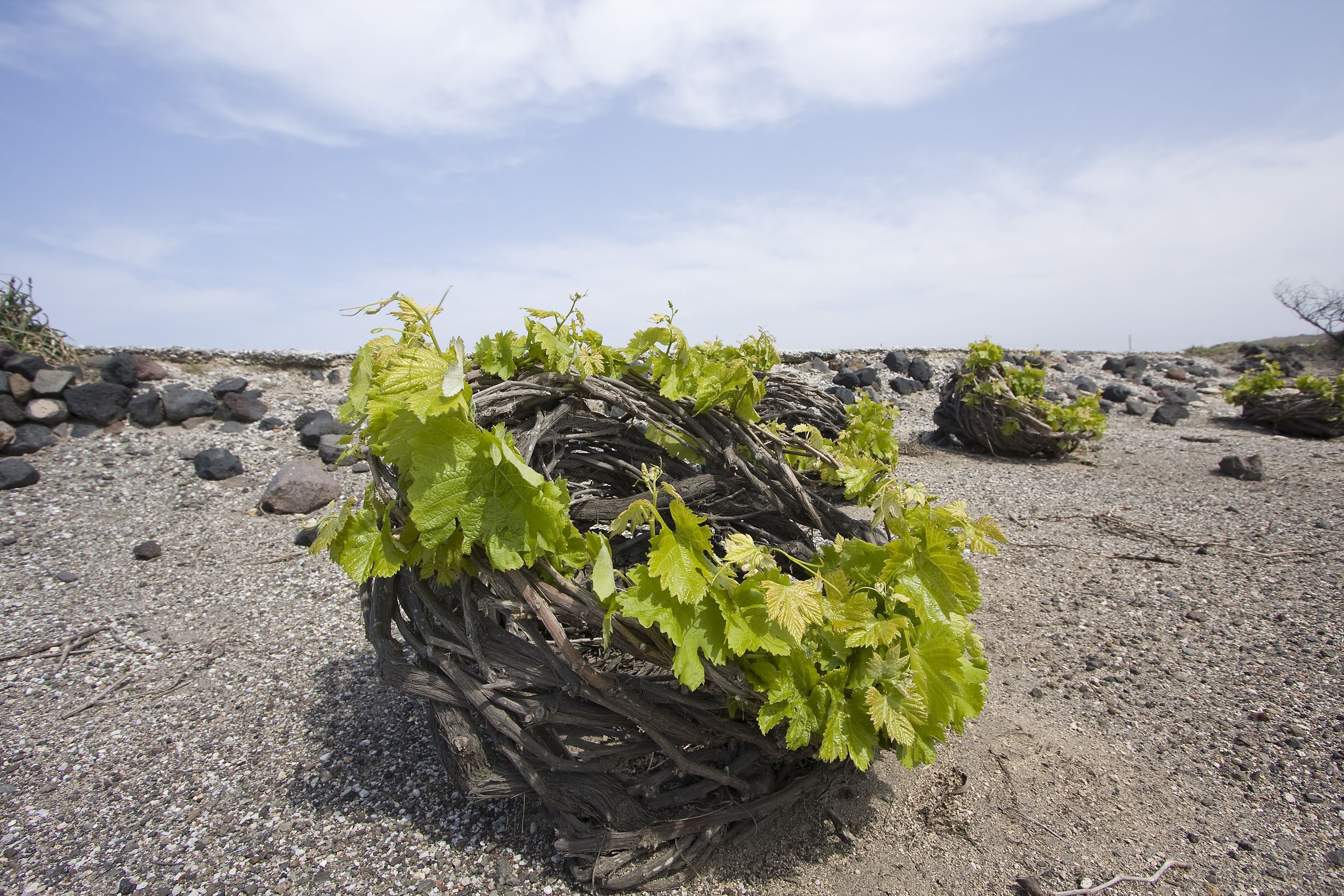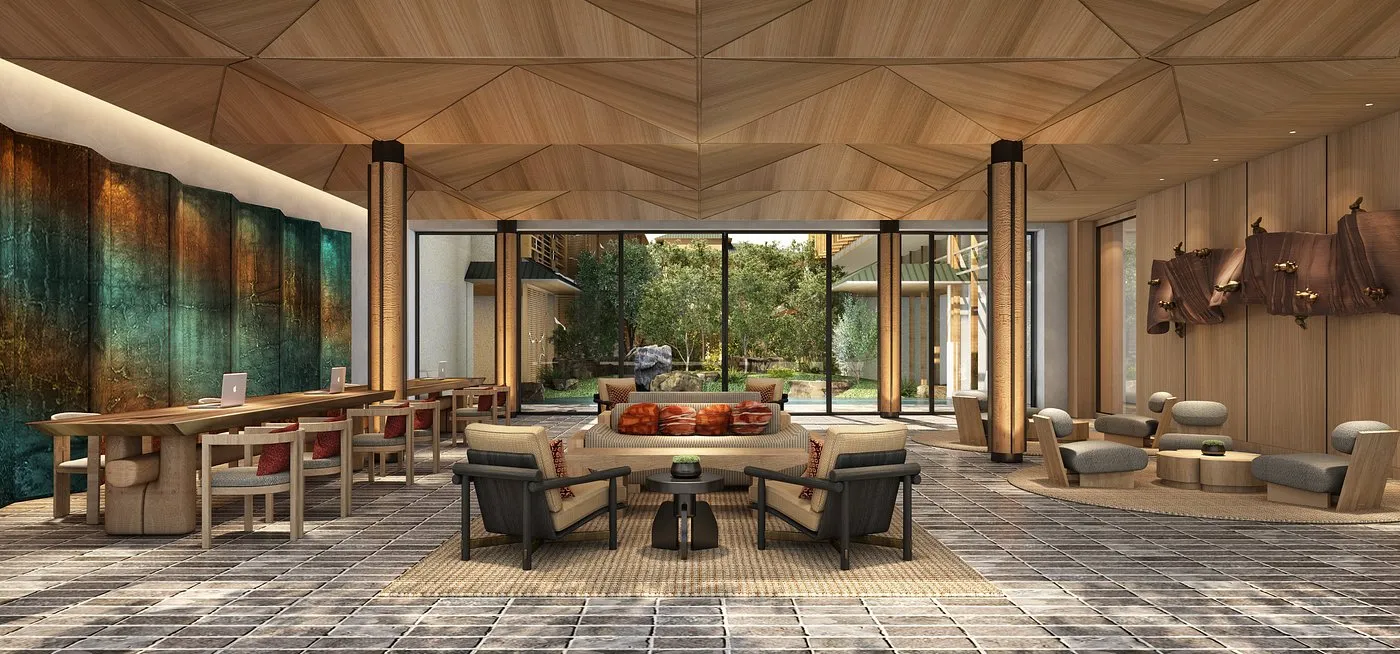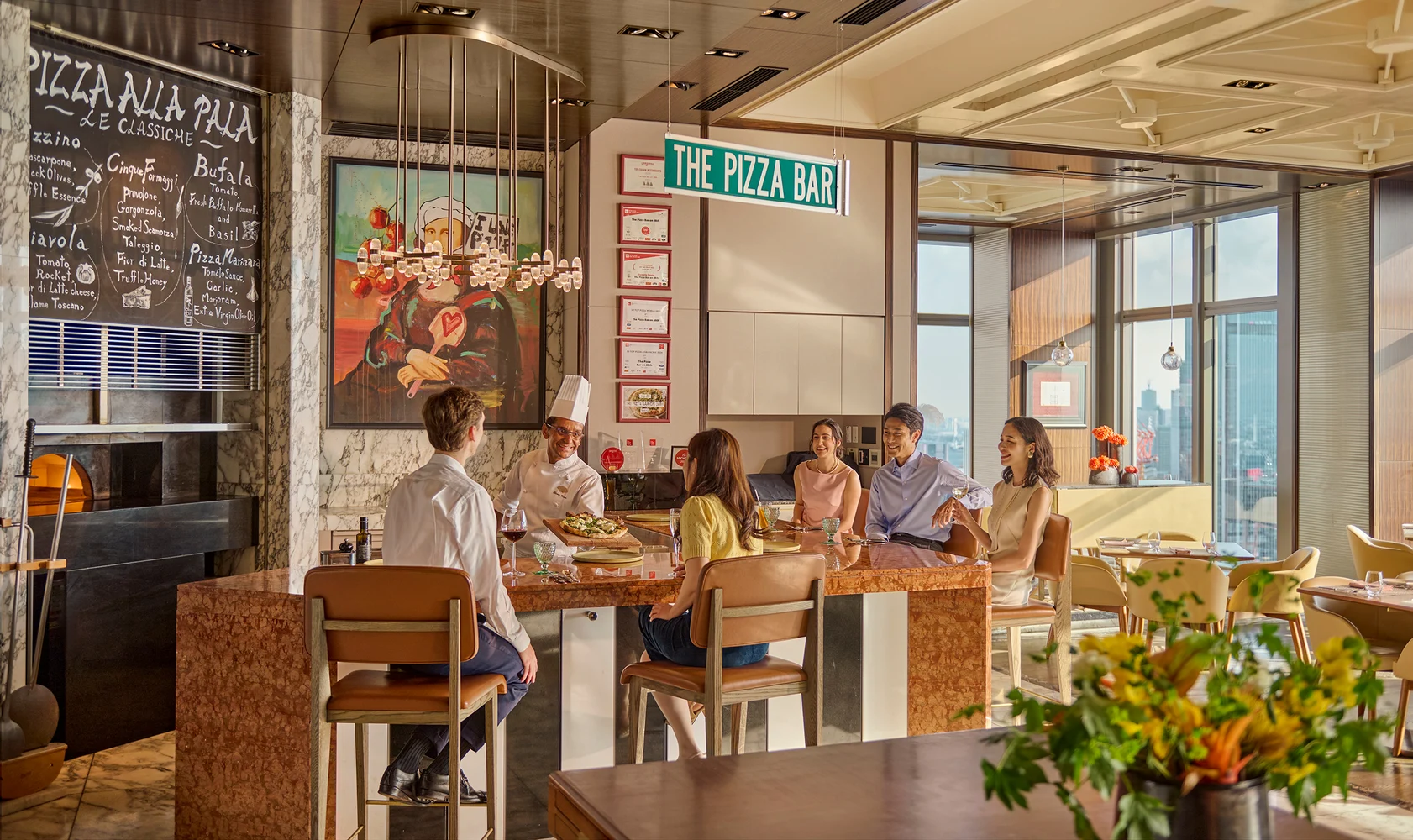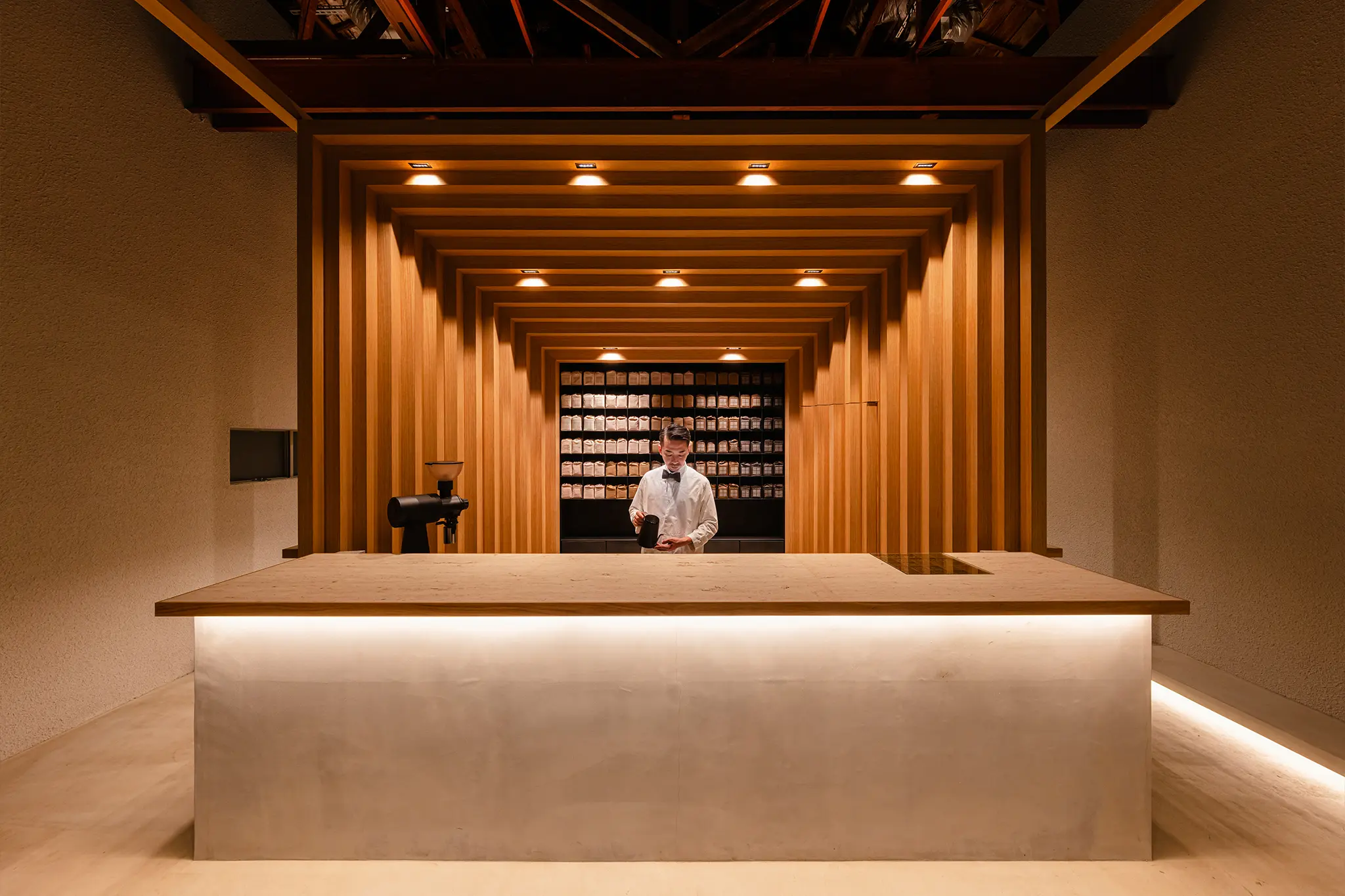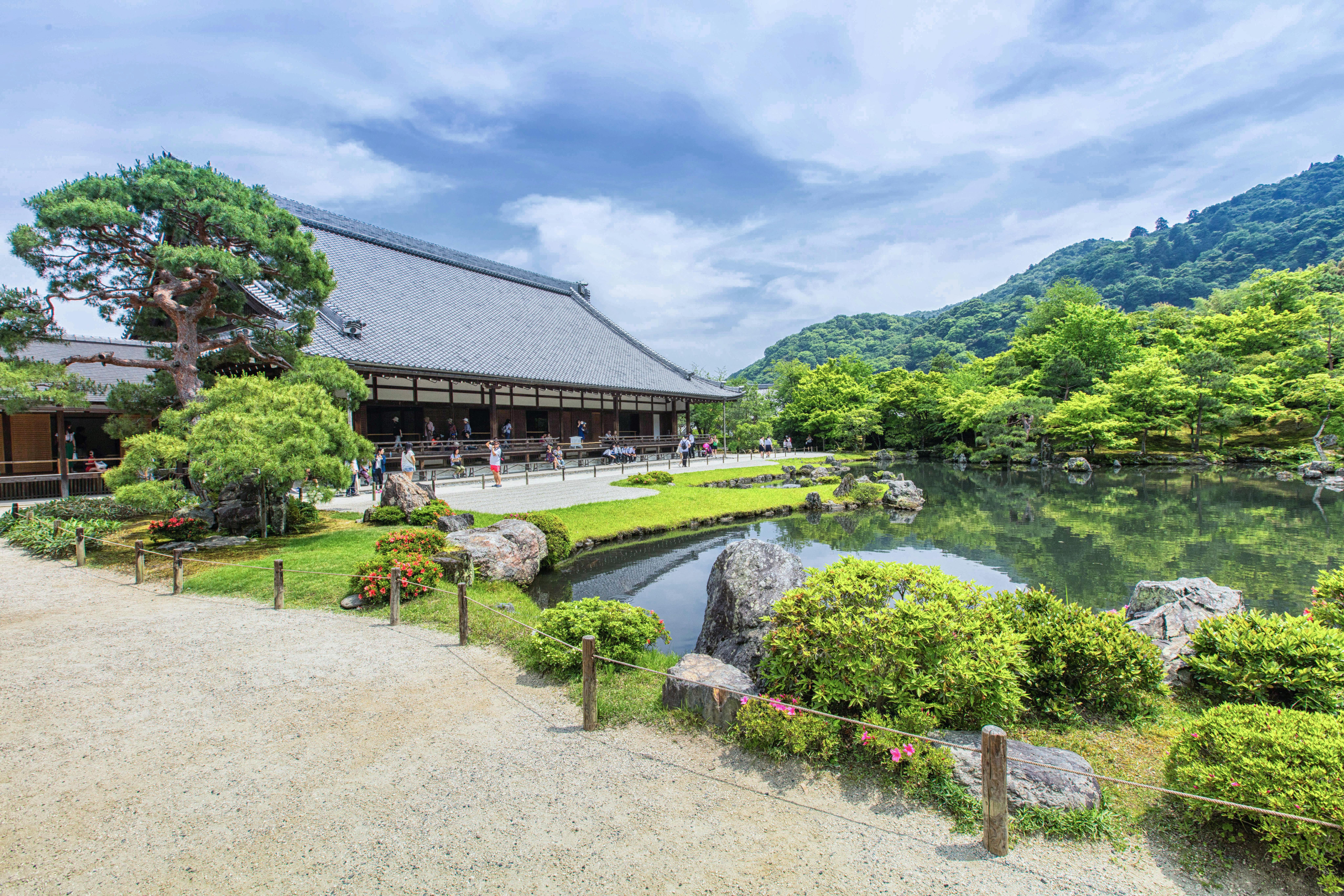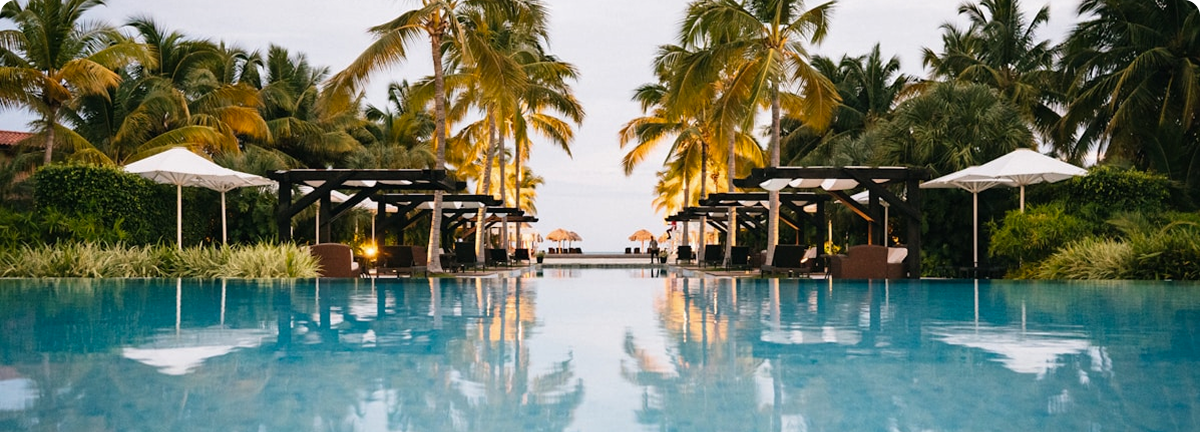Grecian turn: In arid Santorini, this is how uniquely shaped vines produce some of the finest wines
Viticulture often demands compromise with nature, but nowhere is this negotiation more fascinatingly evident than on Santorini island.
This crescent-shaped Aegean jewel, formed by one of history’s most catastrophic volcanic eruptions, presents perhaps the least hospitable environment imaginable for agriculture: severe water scarcity, relentless winds, and soil composed almost entirely of volcanic material.
Yet paradoxically, these very challenges have fostered one of the Mediterranean’s most distinctive wine traditions.
The Paradox of Thirst
Water defines life on Santorini through its absence. The island’s residents have historically measured their water with the precision typically reserved for precious metals.
Traditional homes feature complex systems for harvesting rain from rooftops, storing every possible drop in underground cisterns.
Modern visitors may not recognize the magnitude of this scarcity, as tourism infrastructure now includes desalination plants, but the island’s agricultural heritage developed under conditions of extreme aridity.
Conventional wisdom suggests that quality viticulture requires irrigation, particularly in Mediterranean climates. Santorini boldly refutes this assumption. The island’s vineyards have thrived for over 3,500 years without a single irrigation system.
This seemingly impossible feat results from a remarkable adaptation: the vines have evolved to extract maximum moisture from alternative sources.
The secret lies partly in the dense marine fog that carries vital humidity and condenses on the volcanic soil, providing enough moisture for the vines to survive.
The island’s porous topsoil aspa — made of pumice, volcanic ash and solidified lava — allows what little rainfall occurs to penetrate deeply, accessible to the vines’ extensive root systems.
Water stress, typically destructive to agriculture, here creates the conditions for wines of remarkable minerality and intensity.
The primary white grape, Assyrtiko, develops thick skins and high acidity in response to these harsh conditions, yielding wines of exceptional aging potential and distinctive saline character.
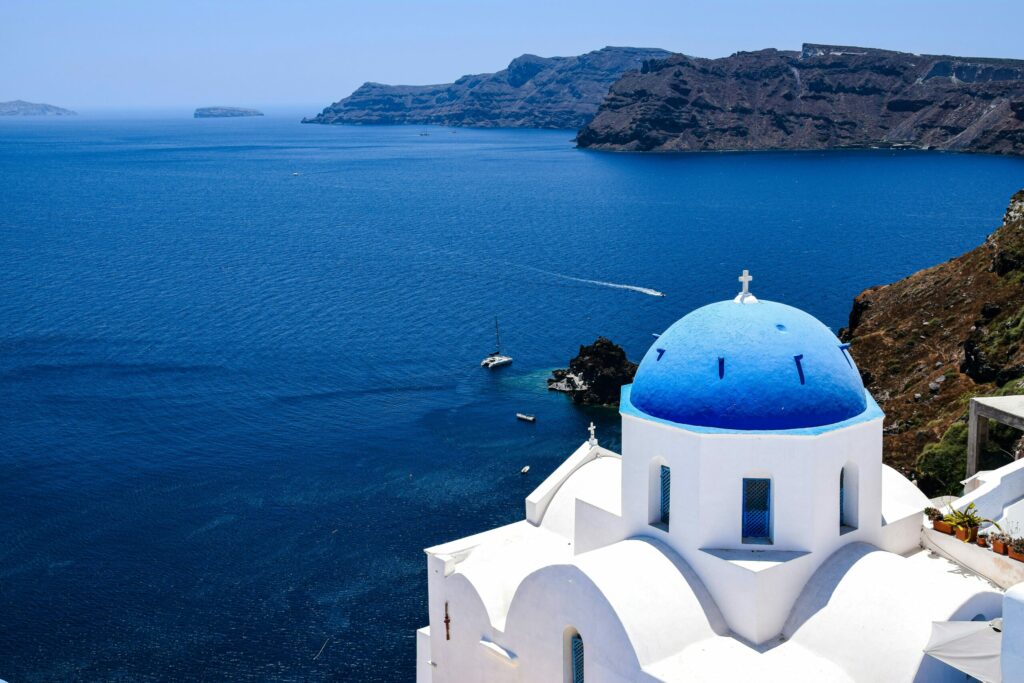
The Art of the Basket
What distinguishes Santorini vineyards from their counterparts worldwide is their remarkable appearance. Rather than training vines along vertical trellises or head-pruning them into small bushes, Santorinian vintners have perfected the basket training or kouloura technique, a viticulture ingenuity.
Each vine is meticulously coaxed into forming a low, circular basket shape, with the growing grape clusters protected within this living container.
The basket serves vital functions: it shields the precious fruit from the island’s fierce winds that can reach gale force even in summer months; it protects against wind-driven sand and pumice that would otherwise abrade the developing grapes; it creates a microclimate that minimizes evaporation.
The landscape looks otherworldly. Fields dotted with thousands of baskets resemble an installation of living art.
As vines age, their gnarled trunks thicken and twist with increasingly complex character. Some productive specimens on the island have survived for over a century, their baskets becoming increasingly intricate with each passing decade.
When production eventually diminishes in elderly vines, farmers don’t replace them entirely. Instead, they nurture an offshoot from the original plant, allowing the genetic lineage to continue.
This practice has contributed to the preservation of pre-phylloxera vines found nowhere else in Europe!
Artisans on the island, having realized the beauty of the spent vines, repurpose them into beautiful decor — like lampshades, which produce fantastic light patterns.
Transcendent results
The wines produced from these basket-trained vines express Santorini’s volcanic character with clarity.
The flagship Assyrtiko presents an apparent contradiction: pronounced minerality coupled with precise citrus notes, substantial body balanced by rapier-like acidity.
These wines communicate their origin with rare eloquence, offering what wine critics often describe as ‘liquid terroir’.
Perhaps even more distinctive is Vinsanto, the island’s legendary sweet wine. Unlike most dessert wines, which rely on noble rot or fortification, Vinsanto achieves its concentration through a dehydration process.
Harvested grapes are spread on mats exposed to the sun for up to two weeks, intensifying sugars and flavours until they resemble raisins. The resulting wine offers complexity: notes of dried apricot, honey, and caramel balanced by the underlying volcanic minerality and acidity that persist even in this sweet expression.
Paired with local cuisine, particularly the island’s rich tomatoes and fava beans that thrive in the same challenging conditions, these wines achieve their fullest expression.
Tradition suggests Vinsanto finds its companion in crème brûlée, as the delicate custard and caramelized sugar complement the wine’s honeyed richness, while the subtle vanilla notes harmonize with the wine’s oxidative character.
Loveleen Arun is Founder Director of Panache World, a luxury travel design company.
Panache World creates memorable journeys throughout Greece, including bespoke experiences focusing on the country’s extraordinary food and wine heritage.

